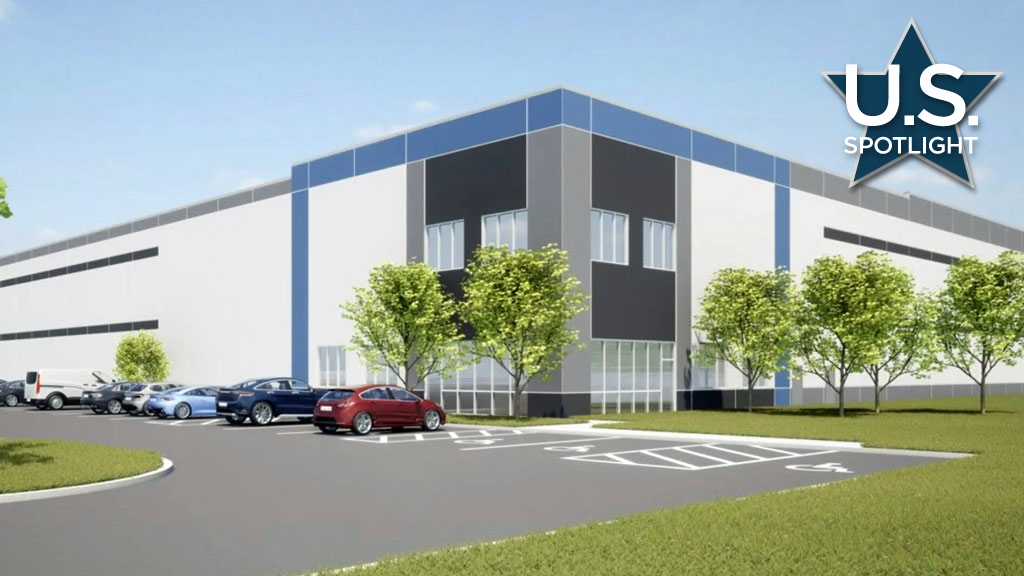Filmmaker Michael Moore’s 1989 film Roger & Me documented the evisceration of the once legendary Buick City automobile complex in his hometown of Flint, Mich.
The one-time industry mega hub, which once employed perhaps 30,000 people, in the years since its demise resembled nothing so much as a giant gray crater. Now that crater is starting to get filled in.
For more than a decade, in response to the 2011 GM Chapter 11 bankruptcy filing, the U.S. Bankruptcy Court created the Revitalizing Auto Communities Environmental Response (RACER) Trust, whose job it is to clean up and ready former GM properties for redevelopment. At 413 acres, the Buick City site was among the largest and perhaps most challenging.
But that was then and this is now.
RACER has now readied a good portion of that property in the city’s north end, and a Detroit-based company has joined with the entity to redevelop it parcel by parcel.
The developer is Ashley Capital, which owns and manages 30 million square feet of mainly industrial warehouses, with most of that in Michigan.
With RACER’s Buick City, now rechristened the Flint Commerce Center redevelopment, the developer may have found the sweet spot.
Some 70 miles northwest of Detroit the mammoth site is one of the few of that size anywhere in Michigan with major development potential.
“You’ll find a lot of those size properties aren’t available,” Ashley Capital development manager Mark Quimby says. “They’re in areas that are already built out” or in greenfields removed from existing transportation hubs.
“There’s just a lack of good shovel-ready sites.”
Despite its 40-year dormancy the Buick City compound otherwise had it all – close expressway access to Canada (Sarnia and Windsor) and Chicago, massive infrastructure services and rail connection.
Moreover, Flint just had a shot in the arm with a $1 billion investment by GM in two existing plants and some $17 million in government aid has been provided to help Ashley do some remedial clean-up.
Ashley has staked its brand on speculative investment and that’s what it’s doing with the first of what’s expected to be many large logistical “shell and core” warehouse-style buildings that it is erecting there.
The $30-million 330,000-square-foot building is the first of what eventually will be the firm’s $300 million investment over 350 acres in Flint Commerce.
Speculative investment differs from built-to-suit and has reaped Ashley success because it provides already completed buildings when tenants’ move-in time is of the essence.
“When a tenant wants space (i.e., the auto industry) they’re often looking for the space with maybe a six-to-nine-month lead time. If you were going to do a build-to-suit from scratch, you’d be double that,” Quimby said.
Another difference between Ashley Capital and other industrial land developers is it doesn’t flip properties. It buys and holds and has a substantial property management team, usually keeping its many buildings within one campus instead of spread out across town.
“We really value long-term relationships with the community,” he said.
The company also has “a lot of experience” with brownfield redevelopment, Quimby said. “There’s a lot of risk in that type of development but when you have the right team that understands that risk you can price the risk.”
While RACER has already done the heavy lifting of clean-up, Ashley Capital still has to work within “the framework” imposed by the trust and state and federal regulations.
“We’re not chasing contamination for the purposes of cleanup,” he said. “We’re responsible for managing any of the environmental materials that are generated or interacted with in the context of our development.”
RACER, for example, is responsible for halting contamination leaking into the legacy sewer network.
But Ashley would be responsible for building new sewers with chemically resistant materials so that any existing contamination cannot leak into them.
The former Buick City site must be one of the heaviest brownfields in the United States, with a history not only of modern automobile plants throughout the 20th century but with horse and buggy era wagon manufacturing as far back as the mid-to-late 1800s.
Ashley is approaching redevelopment in a “phased manner,” said Quimby.
Groundbreaking on the first building took place June 5.
Next up would be seven buildings, based on market conditions, consisting of 3.5-million-square- feet on 274 acres.
And there’s a remaining 60 acres or two parcels as a “reserve transaction” that RACER is still cleaning up.
“So, we have an option on those that we’d like to exercise,” he said.
With the auto industry’s fast-paced EV investments, Quimby said the site could also make an ideal location for a giant 200-acre battery manufacturing plant which would make Ashley adjust its model somewhat to accommodate the large factory.
“That turns into an almost more build-to-suit situation,” he said.
Quimby said the City of Flint is “working hard to redefine itself” and there have been several investments in the downtown.
But, in the hollowed out north end, “this is by far the largest investment” and may complete the circle left by the closure of Buick City.











Recent Comments